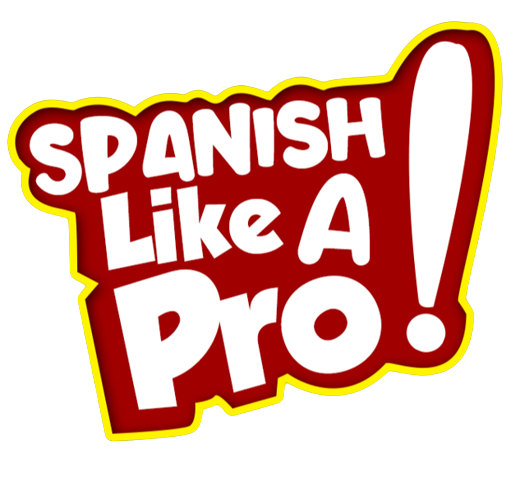LEARNING TO LEARN SERIES
07. THE ROLE OF COMPREHENSIBLE INPUT

![]()
7. The Role of Input in Language Acquisition (Comprehensible Input)
The acquisition of a second language is a complex process that involves the integration of vocabulary, grammar, pronunciation, and cultural knowledge. One of the most influential theories in language learning is Stephen Krashen’s Input Hypothesis, which suggests that language learners acquire language most effectively when they are exposed to language input that is just beyond their current level of proficiency but still comprehensible. This concept is often referred to as comprehensible input.
In this article, we will explore Krashen’s Input Hypothesis, the importance of exposure to authentic Spanish content, and how learners can use comprehensible input to accelerate their Spanish acquisition.
Krashen’s Input Hypothesis: The Theory of Comprehensible Input
Stephen Krashen, a linguist and educator, developed the Input Hypothesis in the 1980s as part of his broader theory of second language acquisition. According to Krashen, language is acquired when learners are exposed to language that is slightly more advanced than their current proficiency level, often described as i+1 (input plus one). The idea behind this is that when learners hear or read language that they can mostly understand, but that also introduces a few new words or structures, their brains can process and integrate these new elements without feeling overwhelmed.
Krashen identified five main hypotheses in his theory, but the Input Hypothesis is often considered the most crucial for language learning:
- The Input Hypothesis: Language is best acquired through exposure to comprehensible input that is just above the learner’s current proficiency level.
- The Affective Filter Hypothesis: Learners’ emotional state (motivation, anxiety, etc.) affects how well they are able to absorb language input.
- The Natural Order Hypothesis: Language learners acquire grammatical structures in a predictable order.
- The Monitor Hypothesis: Language learners can consciously monitor their language use, but this only works when they already have a strong foundation in the language.
- The Acquisition-Learning Hypothesis: There is a distinction between acquiring language naturally and learning it through formal instruction.
For Spanish learners, this means that exposing oneself to Spanish in real-world contexts—whether through conversations, movies, music, or literature—provides an opportunity to hear the language used in authentic ways, facilitating natural language acquisition. The key is to ensure that the input is comprehensible: it should not be so difficult that it is incomprehensible, but it should challenge the learner to extend their understanding.
Why Comprehensible Input is Essential for Spanish Learners
Exposure to comprehensible input is essential because it allows learners to internalize new words and structures in context. This exposure helps learners understand the meaning and use of vocabulary and grammatical structures, instead of simply memorizing them. Language acquisition through input relies on a deep, implicit understanding of how a language functions, rather than on explicit memorization.
Some reasons why comprehensible input is essential for Spanish learners include:
- Contextual Learning: When learners hear new words and phrases used in context, they are more likely to remember them and understand their meaning. For example, if a learner hears the word “caminar” (to walk) used in a sentence like “Voy a caminar por el parque” (I am going to walk through the park), they can infer its meaning from the context of the sentence, rather than just memorizing the word in isolation.
- Natural Acquisition of Grammar: Instead of memorizing rules and exceptions, learners who are exposed to Spanish in context naturally pick up grammar patterns. For example, after hearing many sentences using verbs in the present tense, learners will begin to recognize verb conjugations and eventually apply them correctly in their own speech.
- Cultural Understanding: Comprehensible input helps learners understand not only the language but also the cultural context in which it is used. Understanding the way certain phrases or expressions are used in different Spanish-speaking countries can be crucial to communicating appropriately and understanding the language fully.
Authentic Spanish Media as Comprehensible Input
One of the best ways to expose learners to comprehensible input is through authentic Spanish media. Authentic materials—such as TV shows, movies, music, news articles, and podcasts—provide learners with an opportunity to hear and see how native speakers use Spanish in real life. These materials are typically rich in cultural references, colloquial language, and varied sentence structures, all of which enhance learning.
Examples of authentic Spanish media include:
- TV Shows and Movies: Watching Spanish-language TV shows and movies allows learners to hear conversational Spanish, complete with regional accents, slang, and everyday expressions. For example, shows like “La Casa de Papel” (Money Heist) or “Narcos” expose learners to both European Spanish and Latin American Spanish, while also showcasing cultural nuances.
- Music: Listening to Spanish-language music is an enjoyable way to learn new vocabulary and practice listening comprehension. Genres like reggaeton, salsa, or flamenco provide insights into different aspects of Spanish-speaking cultures.
- Podcasts: Podcasts such as “Radio Ambulante” or “Notes in Spanish” feature native speakers discussing a variety of topics, from history to current events. These podcasts are often categorized by proficiency level, so learners can find content that matches their abilities.
- Books and Articles: Reading in Spanish allows learners to see the written form of the language. Reading novels, short stories, or even articles in Spanish helps reinforce vocabulary and grammar, and exposes learners to different writing styles.
At Spanish Like a Pro, we emphasize the importance of incorporating authentic Spanish media into your study routine. By engaging with real-world content, learners can improve their listening, reading, and comprehension skills, all while gaining insight into the cultures of the Spanish-speaking world.
The Role of Teachers and Learning Platforms in Providing Comprehensible Input
While learners can expose themselves to comprehensible input through media, teachers and learning platforms also play an important role in guiding students through the process. Language instructors can curate materials that are appropriate for the learner’s level, helping them navigate more complex content. Platforms like Spanish Like a Pro offer tailored content designed to introduce learners to language structures and vocabulary gradually, ensuring that the input is comprehensible and useful for learners at various stages.
Teachers can also use interactive activities to create an environment where comprehensible input is constantly available. For example, structured conversation practice with a tutor allows students to hear native-level speech while being given the opportunity to ask questions and seek clarification. Such exchanges ensure that learners are continuously exposed to language in a meaningful and understandable way.
Strategies for Maximizing Comprehensible Input
To make the most of comprehensible input, learners should adopt several strategies:
- Start with Content That Matches Your Level: Choose materials that are just a little bit beyond your current level of proficiency. If you’re a beginner, start with children’s books, simple podcasts, or TV shows with subtitles. As you progress, you can gradually increase the complexity of the content.
- Use Subtitles and Transcripts: When watching Spanish TV shows or movies, use Spanish subtitles instead of English subtitles to reinforce what you hear. For podcasts, many offer transcripts, allowing you to read along as you listen.
- Repetition is Key: Repeated exposure to the same content helps reinforce new vocabulary and grammar structures. Don’t be afraid to watch the same movie or listen to the same podcast episode multiple times.
- Engage with the Content: Actively engage with what you are learning. Take notes on new words, look up unfamiliar expressions, and try to use them in your own speech or writing.
Conclusion
Comprehensible input is a foundational concept in language acquisition, and for Spanish learners, it offers a powerful method for internalizing vocabulary, grammar, and cultural context. By exposing themselves to authentic Spanish media, engaging with interactive learning platforms, and applying strategies to maximize input, learners can accelerate their journey toward fluency.
At Spanish Like a Pro, we understand the importance of comprehensible input and aim to provide our learners with high-quality, authentic materials that challenge them while remaining accessible. Whether through listening to a Spanish-language podcast, reading a short story, or practicing with a tutor, consistent exposure to comprehensible input is key to mastering Spanish.

